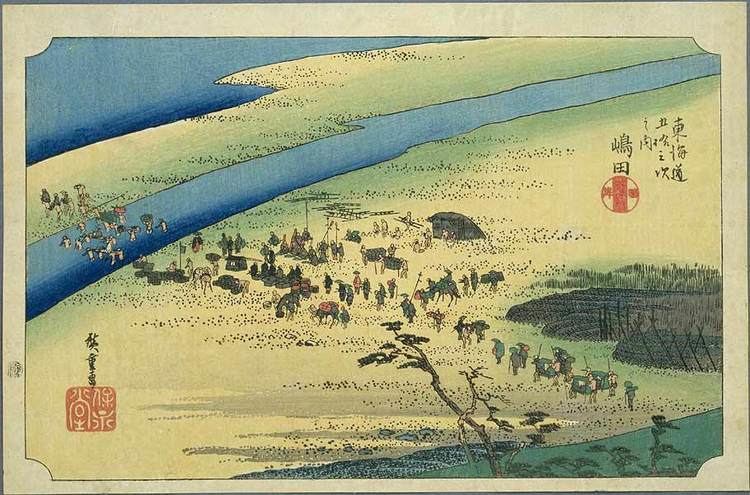 | ||
Shimada-juku (島田宿, Shimada-juku) was the twenty-third of the fifty-three stations of the Tōkaidō. It is located in what is now part of Shimada, Shizuoka Prefecture, Japan.
Contents
History
Shimada-juku was located on the left bank (Edo side) of the Ōi River, just across from its neighboring post town, Kanaya-juku. The Tokugawa shogunate expressly forbid the construction of any bridge or ferry service over the Ōi River, forcing travellers to wade across its shallows. However, whenever the river flooded due to strong or long rains, it made passing nearly impossible. During period of long rains, visitors were sometimes forced to stay at Shimada-juku for several days, increasing the amount of money they spent.
A common saying about Shimada-juku was "You can travel the 8 ri to Hakone, but to cross it, you must cross the uncrossable Ōi River" (箱根八里は馬でも越すが 越すに越されぬ大井川, Hakone hachiri wa uma demo kosu ga / kosu ni kosarenu Ōigawa).
The classic ukiyoe print by Ando Hiroshige (Hoeido edition) from 1831-1834 depicts travellers crossing the shallows and sand banks of the Ōi River. Some are on foot, some are carried by porters and others are riding in kago.
A portion of the post town, including a number of late Edo-period buildings, has been preserved as a National Historic Site by the Japanese government.
